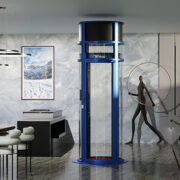A commercial roof is a vital component of any business property, protecting not only the structure itself but also the assets, employees, and customers inside. Over time, commercial roofs endure the effects of weather, wear and tear, and aging, making regular maintenance and timely repairs essential. This guide offers an overview of commercial roofing repair services, highlighting the importance of repair, common issues, and best practices for ensuring longevity and safety.
The Importance of Commercial Roofing Repair
Commercial roofing repair services are critical for maintaining the integrity of your property. A well-maintained roof protects the building from water infiltration, heat loss, and structural damage. Failing to address roof damage promptly can lead to leaks, mold, and extensive damage that can disrupt business operations and result in costly repairs. By investing in regular inspections and commercial roofing repair, businesses can extend the lifespan of their roofs and avoid major issues.
Common Roofing Issues That Require Repair
Understanding common roofing issues is the first step in identifying when repairs are needed. Here are some of the most prevalent problems that commercial roofs face:
- Leaks and Water Damage: Roof leaks are one of the most common issues commercial properties face. Water infiltration can cause significant damage to both the roof and the interior of the building, leading to mold growth and structural weakening.
- Punctures and Tears: Roofing materials such as membrane, shingles, or metal can develop punctures or tears from debris, foot traffic, or severe weather conditions. These breaches compromise the roof’s integrity, requiring prompt commercial roofing repair to prevent further damage.
- Blistering or Bubbling: Heat and moisture buildup can cause roofing materials to blister or bubble. These formations may not only weaken the roof but also lead to leaks and further deterioration.
- Damaged Flashing: Flashing is the material used around roof penetrations, such as vents, chimneys, and HVAC systems. Damaged or improperly installed flashing can result in leaks, making it essential to address any flashing issues during roof repair.
- Pooling Water: If your commercial roof is flat or low-slope, pooling water can become an issue. Standing water can lead to significant wear on the roofing materials and may eventually result in leaks and water damage.
The Commercial Roofing Repair Process
Commercial roofing repair involves several steps to ensure that the roof is restored to its optimal condition. Here is a general overview of the process:
- Inspection and Assessment: A professional roofing contractor begins by conducting a thorough inspection of the roof. This includes evaluating the condition of the roofing materials, identifying any damage, and assessing the overall health of the roof.
- Identifying the Issues: After the inspection, the roofing contractor identifies the specific issues that require repair, whether it’s a small leak, punctures, or damaged flashing. They will also look for signs of deterioration or areas that may be prone to future damage.
- Repairing the Damage: Once the issues are identified, the contractor will begin the repair process. This may involve patching holes, replacing damaged sections of the roof, re-sealing flashing, or applying a protective coating to prevent further damage.
- Final Inspection: After repairs are completed, the roofing contractor will conduct a final inspection to ensure that all issues have been addressed and that the roof is secure and functional. This ensures the longevity and safety of the roof.
Best Practices for Preventing Roof Damage
While commercial roofing repair services are essential for addressing damage, proactive maintenance can help prevent the need for frequent repairs. Here are a few best practices for maintaining your commercial roof:
- Regular Inspections: Schedule annual roof inspections to identify any potential issues before they escalate into major problems. A professional roofer can spot early signs of wear and tear and make minor repairs to avoid costly repairs down the line.
- Clean Gutters and Drains: Clogged gutters and drains can lead to water pooling on the roof, contributing to leaks and water damage. Keep gutters and drains clear of debris to ensure proper water flow.
- Address Small Issues Promptly: Small issues, such as loose flashing or minor cracks, should be repaired immediately to prevent them from turning into more significant problems.
- Proper Insulation: Proper insulation can help regulate temperature and prevent moisture buildup on the roof, reducing the risk of damage.
Conclusion
Commercial roofing repair is an essential part of property maintenance, ensuring the longevity and safety of the building. Regular inspections and timely repairs can help extend the life of the roof, prevent costly damage, and safeguard the integrity of the property. By addressing issues promptly and implementing best practices for roof care, businesses can maintain a secure, efficient, and long-lasting roof that protects their assets for years to come. Investing in professional commercial roofing repair services is key to preserving the health of your building and preventing future headaches.





Comments